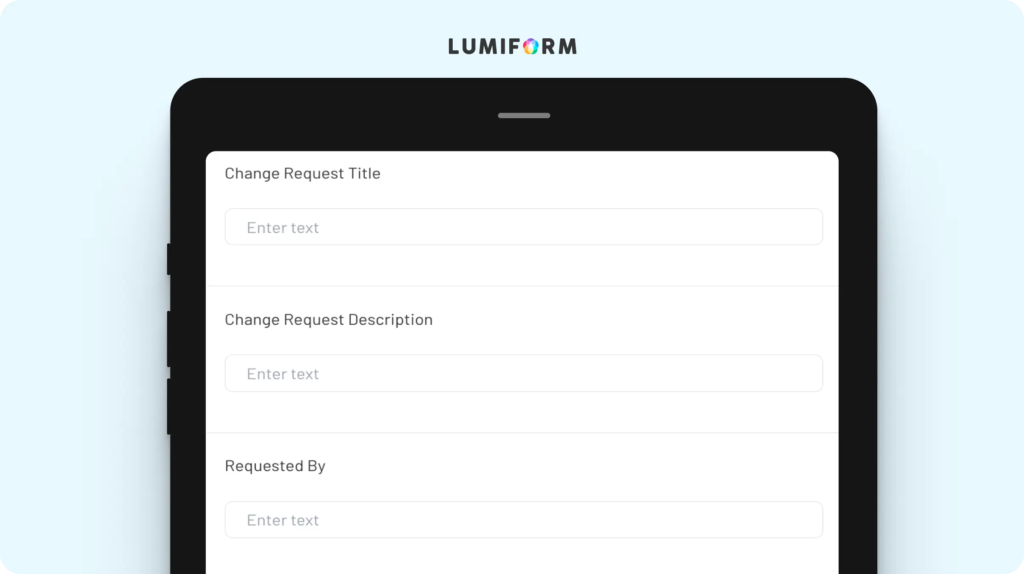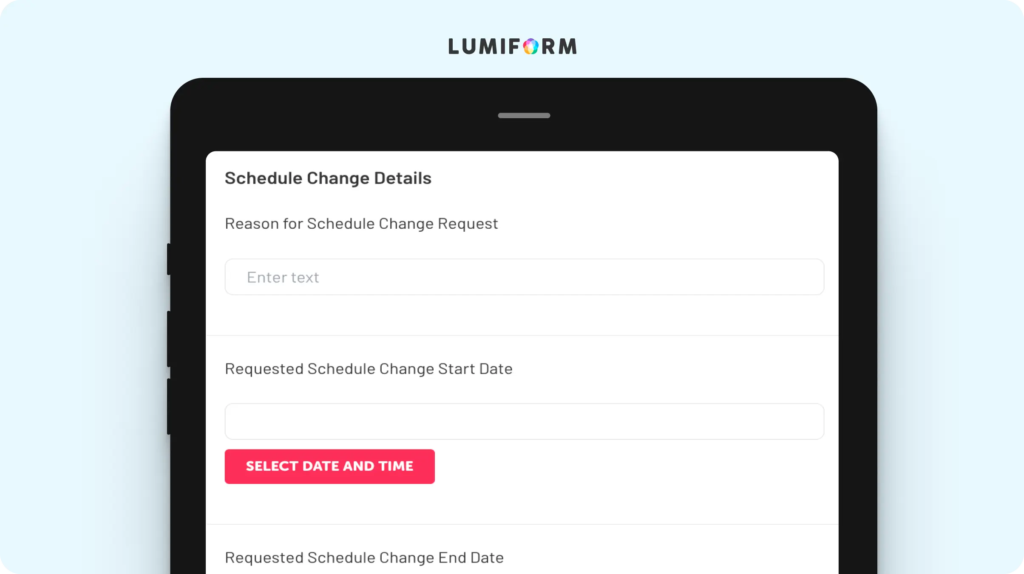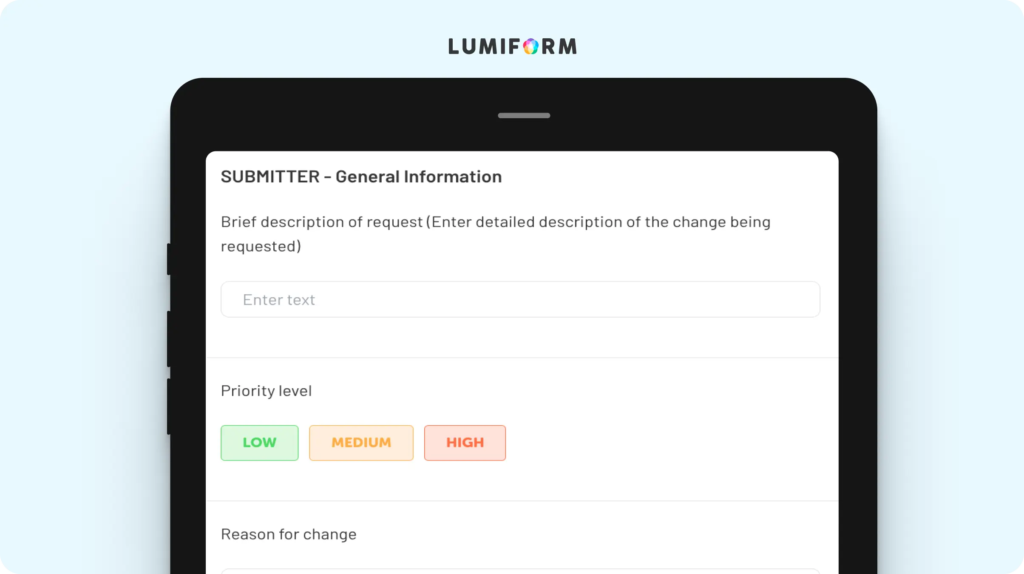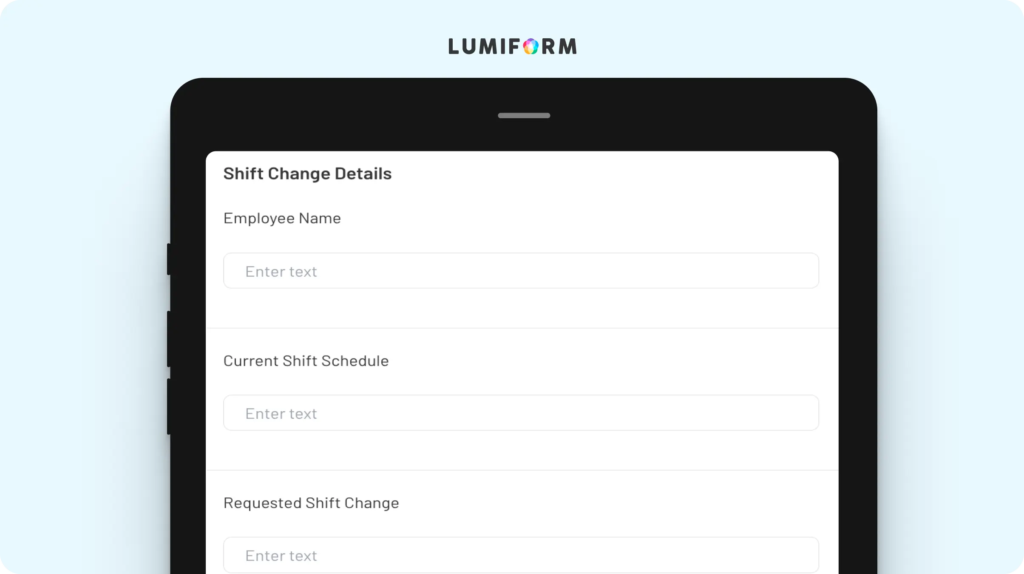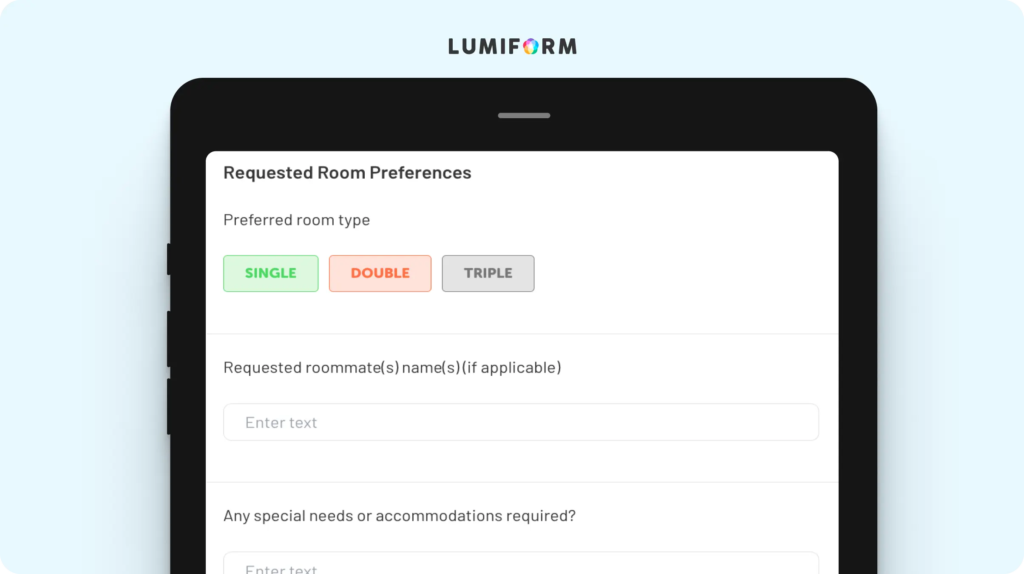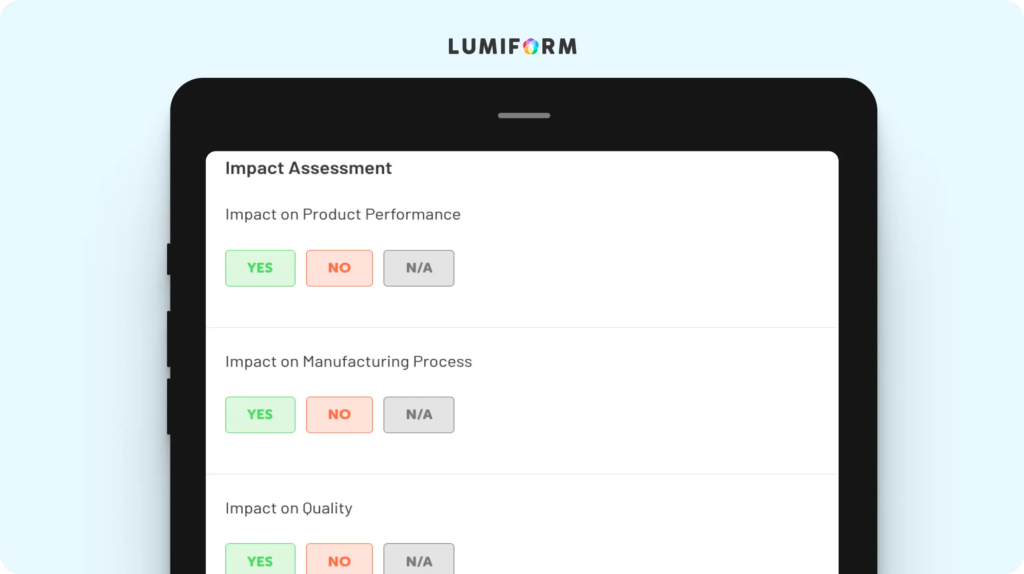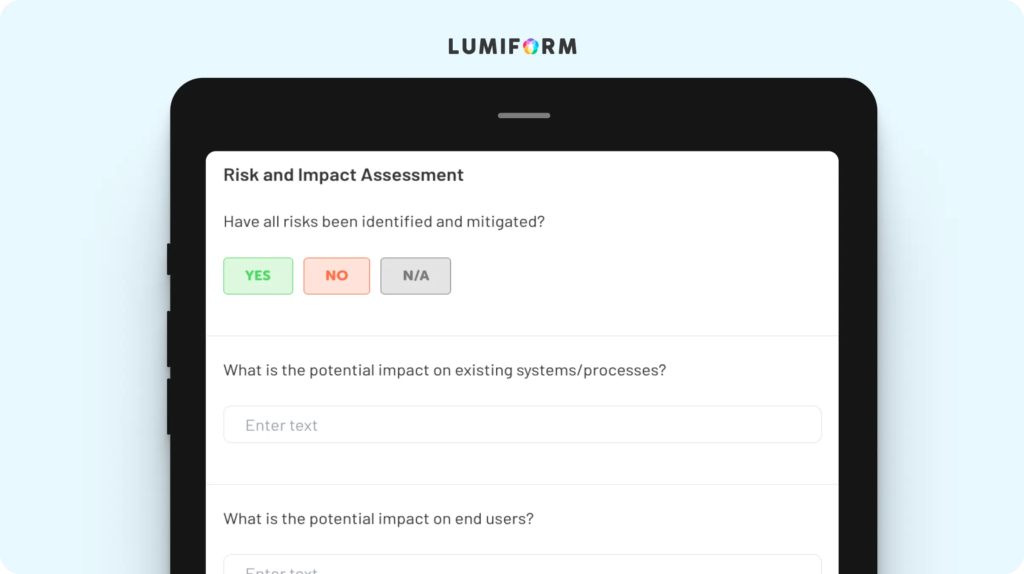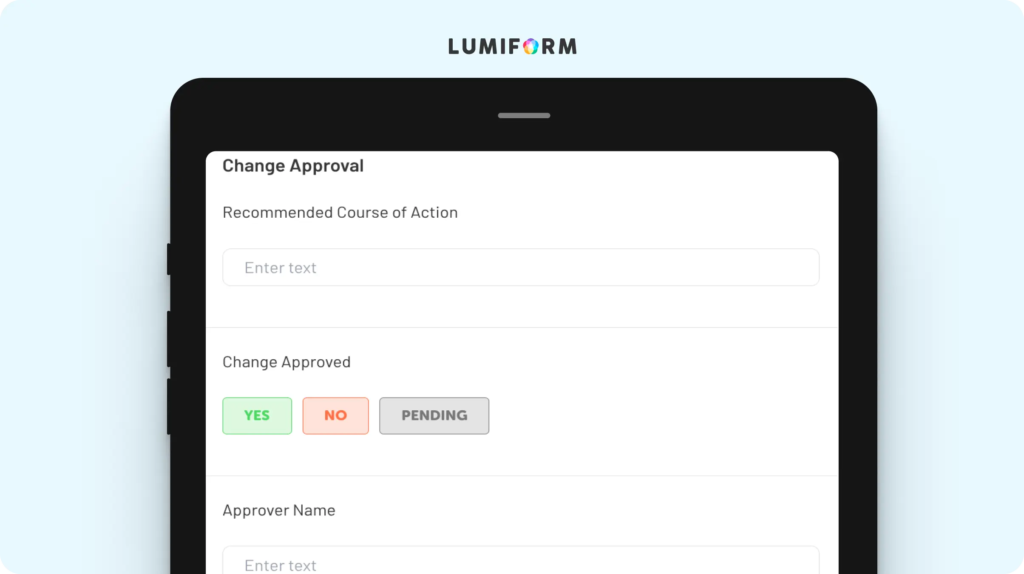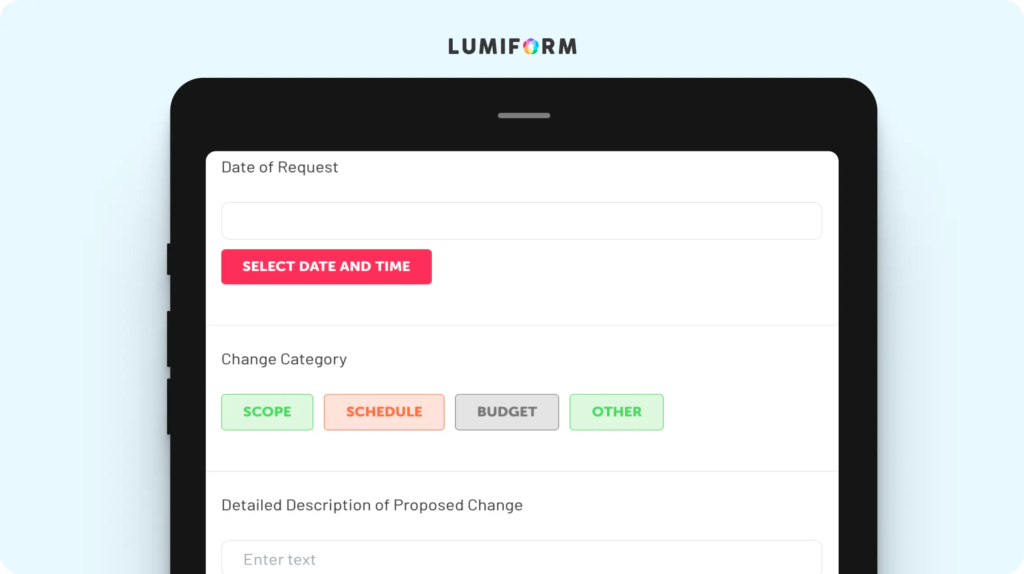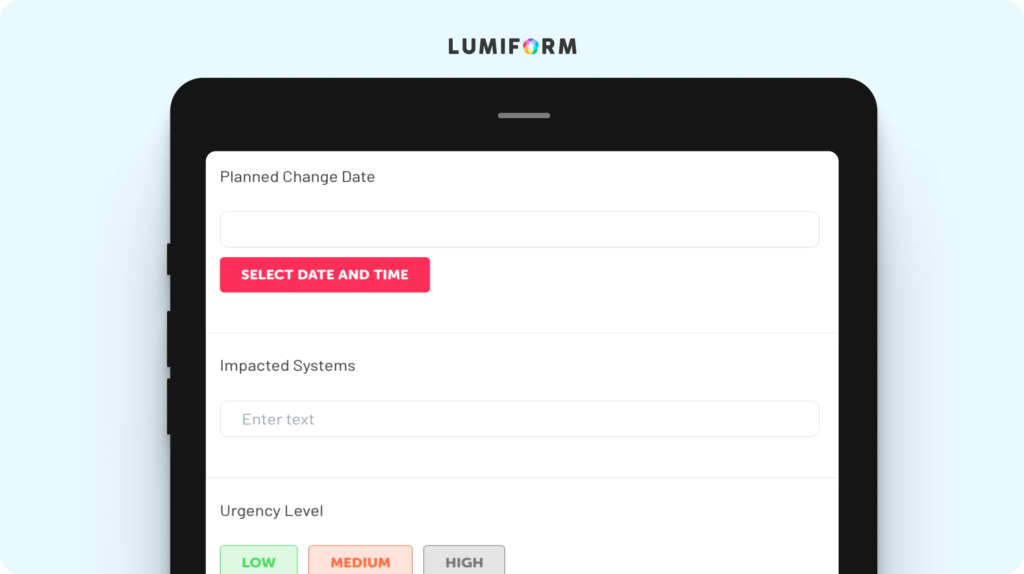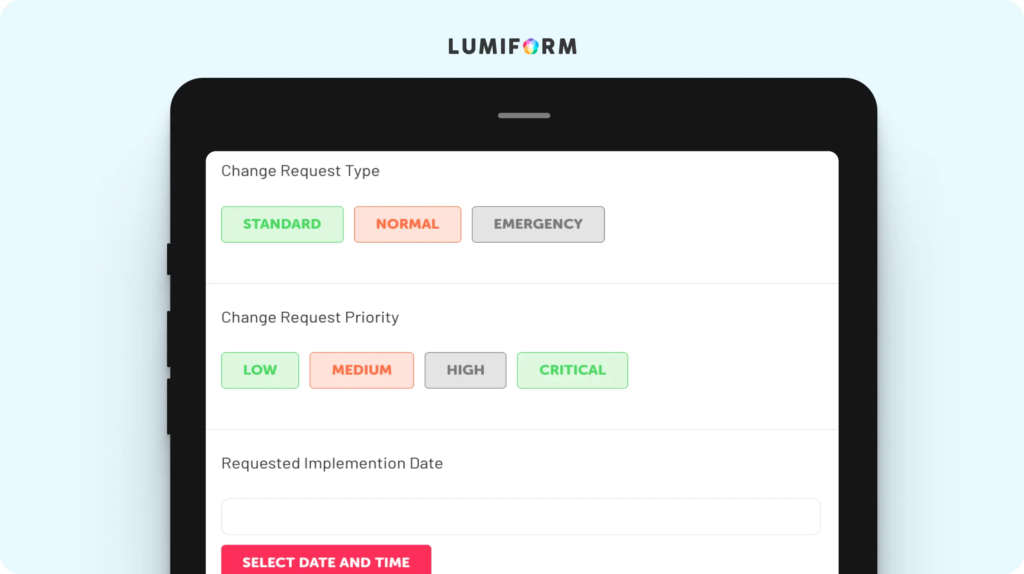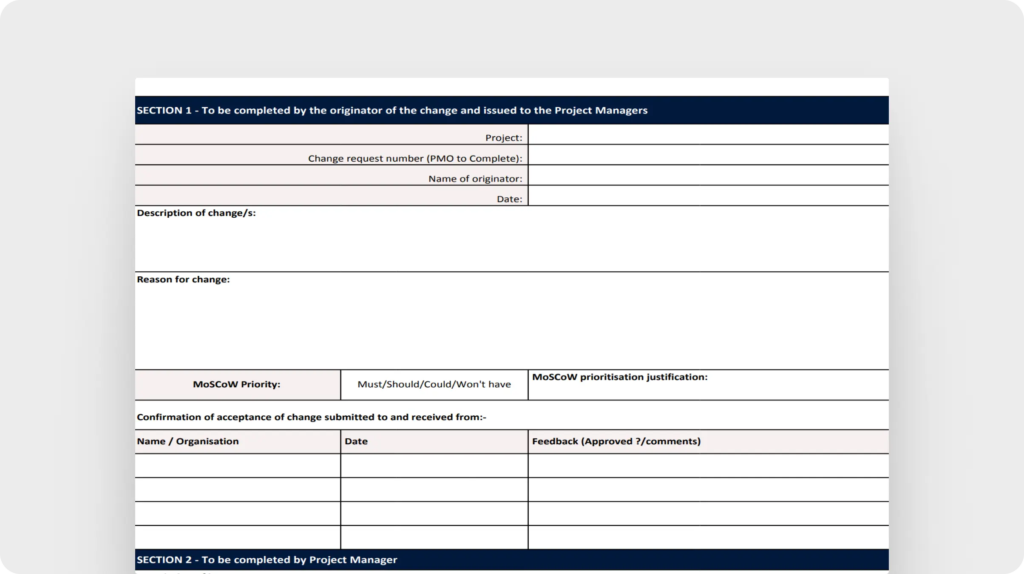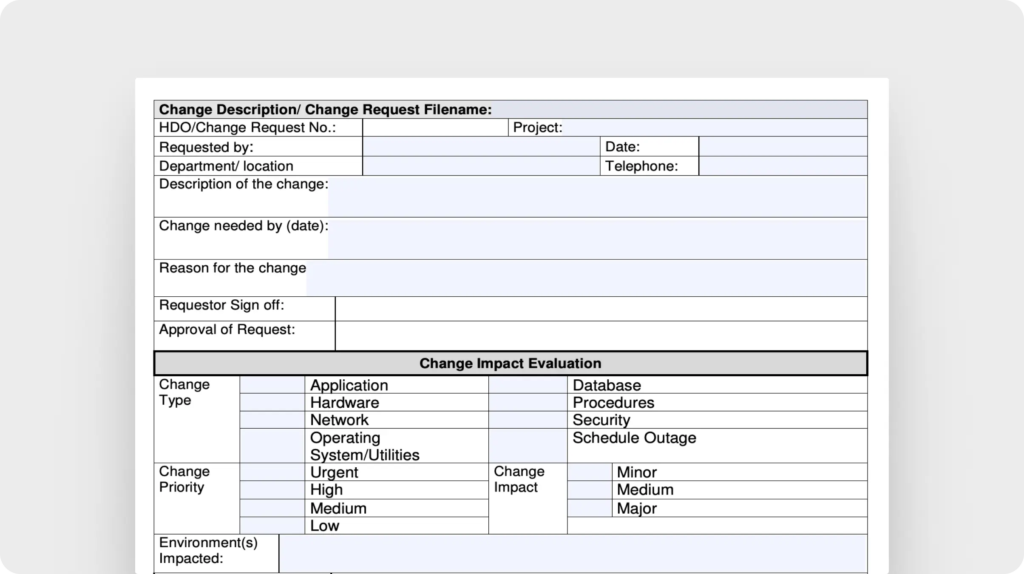Change requests are a core part of keeping projects on track, especially when unexpected adjustments come up. A thorough change request form allows you to document, assess, and implement changes without disrupting workflow. This way, you can capture key details like purpose, potential impacts, next steps, and necessary approvals.
With the 13 change request forms below, you can stay on top of requests, whether it’s about adjusting shift schedules or implementing much larger changes across your organization. These forms make handling change less chaotic and more transparent.
Change request forms for smooth documentation
The request forms below range from general forms for any workflow to specialized forms for IT and engineering:
Change request form
For managing changes within projects or processes, a change request form gives you a clear path for submitting and approving modifications. Key features include fields for the reason behind the change, detailed descriptions, and expected impacts. The form keeps everyone on the same page, helping to prevent confusion or unnecessary delays in your workflow. Customization is easy—adjust fields to include additional sections like priority levels or budget impact, making the form a tailored fit for your project management needs.Schedule change request form
When employees need a shift adjustment, a schedule change request form provides an efficient way to submit and review requests. With built-in fields for dates, shift details, and reasoning, this form supports both the employee and manager in coordinating coverage without missteps. Customization options allow you to specify role-specific approvals or add notes anywhere in the form. This organized approach simplifies handling schedule adjustments while keeping everything on record, helping prevent coverage gaps or operational confusion.Change order request form
In construction, manufacturing, and other project-based industries, a change order request form is a valuable tool for managing modifications to existing work orders. With fields for change descriptions, cost adjustments, and deadlines, it captures critical information so all stakeholders are aligned. You can edit the form to involve extra areas for risk assessments or client approvals, making it more robust for complex projects. Use this standardized change order form to ensure that you’re reviewing and approving adjustments with a clear, traceable process, minimizing the risk of misunderstandings.Shift change request form
A shift change request form provides employees a simple way to swap or adjust shifts, keeping team schedules organized. It includes fields for current and requested shifts, reason for the change, and a manager approval section, streamlining the process of coordinating shifts. You can easily customize it by adding fields for specific roles, team leader approvals, or deadlines for requests. By standardizing shift changes, this template helps you avoid last-minute scheduling issues, making it easier for managers and employees alike to maintain a reliable and adaptable work schedule.Room change request form
This room change request form is essential for schools and universities, where student housing assignments may require frequent adjustments. It includes sections for current and requested room details, reasons for the change, and approval fields. Customizing it is easy—add fields for priority level, student details, or specific accommodations as needed. This organized approach keeps room changes more efficient and well-documented, leading to better use of housing resources across campus.Engineering change request form
An engineering change request form is a key tool in product development and manufacturing, providing a structured way to document modifications to designs or specifications. You can write down the requested change, affected components, and potential impact, making it easy for teams to assess and approve updates. Customizable sections for urgency, cost analysis, and cross-departmental approvals allow you to tailor the form to complex engineering needs. By formalizing requests, this template keeps engineering projects on track, reducing the risk of unapproved or undocumented adjustments.Change management request form
For handling organizational shifts, a change management request form is invaluable in structuring and tracking key transitions. This template covers areas like change objectives, affected areas, and projected outcomes, ensuring that proposed changes are documented and align with overall goals. Adapt it by adding fields for stakeholder feedback or dropdowns based on your priority levels. This organized approach supports smoother transitions by ensuring that all necessary steps are planned and monitored, reducing disruption and maintaining operational stability.Project change request template
A project change request template gives you a clear path for introducing and approving project adjustments, helping teams manage shifts without losing momentum. Covering proposed changes, budget implications, timelines, and potential risks, it captures the essentials needed for effective decision-making. You can customize this template by adding sections for resource allocation, alternate scenarios, or additional approvals, making it ideal for projects with layered dependencies. With this approach, you can document and review changes thoroughly, helping to keep projects aligned with their goals.Major change request form
When a significant change is on the table, such as reorganizing departments or switching business models, this change request form brings structure to the approval process. Designed for requests with substantial impact, this form covers details like reason for change, involved departments, and resource requirements. It’s easily customizable to include risk assessments, financial impact analysis, or high-level approvals so that each major change is well thought-out and justified. Using this template helps organizations manage substantial shifts efficiently, reducing potential bottlenecks or unforeseen complications.IT change request form
An IT change request form is essential for managing updates, patches, or system modifications while minimizing downtime. It features sections for describing the change, affected systems, testing requirements, and rollback plans, creating a complete record of each modification. Customize it by adding approval tiers, emergency protocols, or risk assessments specific to IT needs. With this structured approach, IT teams can streamline changes, ensuring smoother implementation, better tracking, and improved system stability across the organization.ITIL change request template
An ITIL change request template aligns with IT Infrastructure Library (ITIL) standards, helping IT teams manage changes in a structured and compliant manner. This template includes fields for change description, risk assessment, impact analysis, and backout plans so that you can thoroughly evaluate each modification before implementing. You can add more fields to it for priority levels, approval hierarchies, and post-implementation review, making it adaptable to various organizational requirements. By following ITIL’s structured approach, this template helps maintain service quality and minimize risk.Change request form (Southampton City Council)
Manage and document project changes with this detailed template by the Southampton City Council in the UK. It includes sections for describing the change, justifying its priority, and assessing implications on time, cost, and quality. The form ensures that key stakeholders, including project managers and sponsors, review and approve changes before implementation. With a clear approval process and requests recorded in the change control log, you can better maintain project transparency and accountability.Information technology services change request form (PVAMU)
This request form template from Prairie View A&M University is designed to streamline and document IT service changes. You’ll be able to capture essential details, like the nature of the change, the urgency, which systems are impacted, and the required resources. The requestor has to give a detailed description and justification so that proposed changes match up with security protocols. At the end, there are sections for the approval status and scheduling and monitoring of the implementations.
How to create your own change request form in Lumiform
Setting up a change request form in Lumiform is simple–just select a template, then edit it using the AI form builder. You can quickly arrange fields for key details like requested changes, approvals, and impact assessments so every request is thorough. Use multiple input types, such as photo uploads or signature fields, to capture visual proof or sign-offs, making your form both comprehensive and easy to fill out.
Once your form is ready, team collaboration tools make it easy to share and review change requests in real-time. If any issues arise, simply assign tasks to team members to keep workflows on track and ensure nothing falls through the cracks. After you’ve implemented the changes, Lumiform’s data analysis and reporting tools help you review the process, highlighting patterns or areas for improvement. With these features, you can create a change request form that’s easy to use while keeping everyone aligned and informed at every stage.

